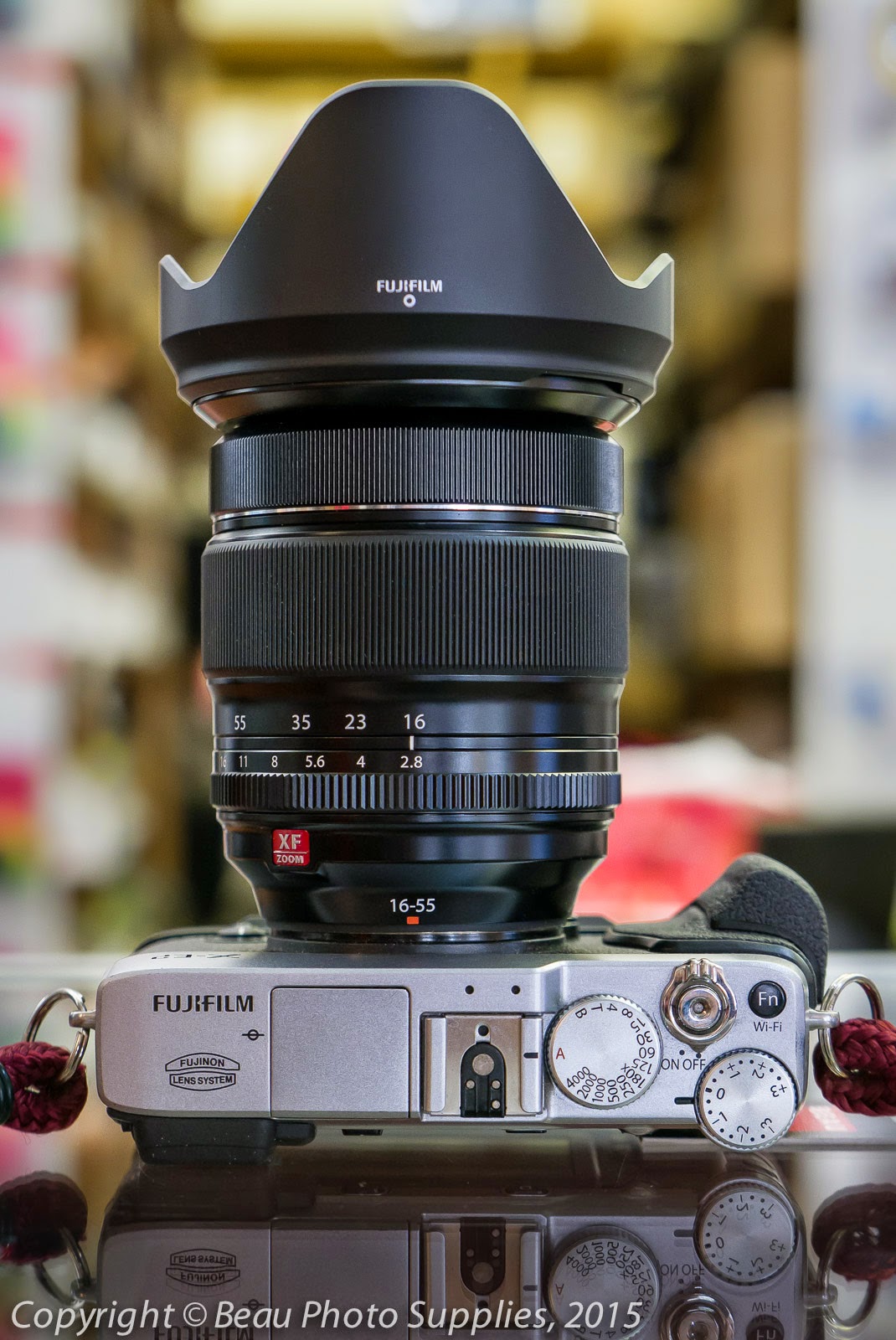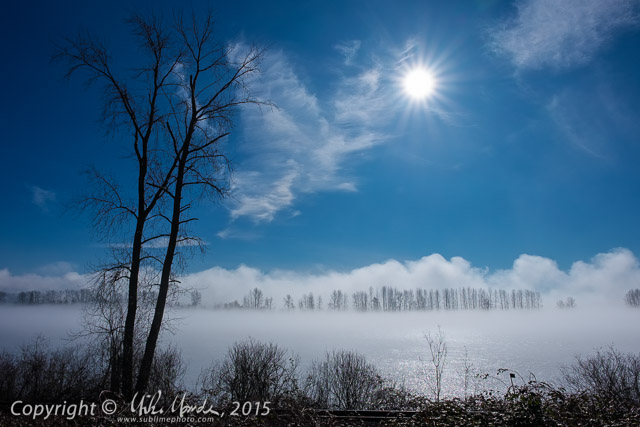Gallery (35 images): Tested! Fujifilm XF 16-55mm f/2.8R LM WR
Back in February, I finally had the opportunity to shoot with a production grade Fujifilm XF 16-55mm f/2.8R WR LM zoom lens and now finally, after a long delay, I've made an effort to publish a review. This professional grade, weather resistant (WR) zoom lens has a constant f/2.8 aperture throughout its range and has very fast focusing due to Fujifilm's linear-motor (LM) system. For an early look at its build quality and some initial comments on the performance of a preproduction version, see my posting on the Beau Photo blog here: Coming soon... Fujinon XF 16-55mm f/2.8R LM WR
Most of the comments on the preproduction lens hold fast with the final version too, so excellent centre sharpness at all focal lengths, even wide open, smooth bokeh at 55mm which is nice for shooting portraits, very low chromatic aberration and virtually no purple fringing. One thing that I hadn't had a chance to test previously was the lens' flare resistance, and in that way the 16-55mm proved exceptionally good. If you look at several images shot straight into the sun in the sample image gallery (one of them shown above), you'll see how flare and loss of contrast are almost nonexistent in those situation. Very impressive indeed!
Build quality is also top notch, with incredibly smooth and well damped zoom and focus rings, a solid barrel that has no play when extended, and an innovative filtered "venting" system that allows the lens to breath when zooming in and out, helping to prevent dust from accumulating inside over time. The aperture ring also has crisp detents and is more resistant to turning accidentally than some of Fujifilm's other lenses. Heck, even the lens cap has been improved, having inwardly angled centre-pinch ridges that feel far more secure in the hand, something only the 50-140mm shares so far.
If you've already clicked on the gallery and read the introduction there, you may be wondering at the comment on being "let down" a little by its performance? Indeed, as impressive a lens as this is, I decided not to purchase one for myself. Firstly, as I mentioned in the gallery, I found the size and weight of this lens didn't feel well balanced on my X-E2, a camera that feels much better in the hand when using smaller and lighter zooms or primes. Those with an X-T1, especially one with an added handgrip or vertical grip, would likely not feel that way, but I personally just didn't like how this big lens felt on my X-E2. That said, if I had been truly blown away on absolutely all fronts by its image quality, I probably would have bought one regardless of its heft...

Really the only area in which I was personally let down, is that the edges and extreme corners of shots taken with the 16-55mm never seemed to reach the level of superb quality that the centre does, even when stopped down beyond f/5.6. In this regard, it turns out the production lens did not really improve much on the preproduction sample after all. This may be, in part, due to the fact that this lens does suffer from a fair bit of barrel distortion at the 16mm end, and pincushion at the 55mm end, thus requiring software correction throughout much of its range...
In fact, Fujifilm's cheaper, lighter and smaller image-stabilized kit lens, the XF 18-55mm f/2.8-4 OIS, actually seems to have more consistent centre-to-corner sharpness than the 16-55mm f/2.8, once you stop down beyond f/6.7 or so. Helping may also be that it seems to have a little less overall barrel and pincushion distortion, although it too is far from being perfect. If one were to only compare centre sharpness however, I believe the 16-55mm would win at pretty much all f-stops and focal lengths. That said, being primarily a landscape (and cityscape) shooter, I prefer having a lens that performs very consistently, corner to corner, rather than one that is a little sharper in the center or sharper at the extremes when wide open.
Note that the corners and edges of the 16-55mm are indeed far better than the kit zoom in the f/2.8-f/4 range, so for portrait and wedding shooters, photojournalists or anyone who often shoots at wider apertures, the 16-55mm f/2.8 would likely be a better choice. And of course 16mm is a lot wider than 18mm in practice, so that is a plus in its favour too. However myself? Well I wasn't quite convinced. In any case, after testing the 16-55mm and then revisiting some of my older 18-55mm shots, I actually decided to buy an 18-55mm lens again in an X-E2 kit (giving me a second body as a backup or for time-lapse work), since sometimes it is just very convenient to have a mid-range zoom. Plus, after selling my original one to a friend, I had actually missed having it.
Lastly, don't get the idea that I don't care about corner performance at wider apertures; it can be very useful for nighttime city shots, aurora, star trails etc., where one may want to maximize image brightness without shooting at too high an ISO but still have consistent corner-to-corner image quality. That is why I feel that both the incredible XF 23mm f/1.4R and amazing new XF 16mm f/1.4R WR (review coming soon - no kidding!) are "must have" lenses for anyone who likes wide-angle photography, since they both are super sharp and also have impressive corner performance by f/2.8 already. Both are virtually 100% corrected optically for distortion and chromatic aberration and thus require no software correction at all. Most of Fujifilm's primes really are extraordinarily good. But I digress...
In conclusion, there are many qualities of the 16-55mm f/2.8 that are absolutely top notch and if you generally shoot at wider apertures or don't care too much about extreme edge or corner performance, then I would definitely recommend taking a long look at this new zoom. In fact, Beau Photo Supplies now has a large selection of Fujifilm lenses to rent, including the 16-55mm, so I'd recommend giving it a shot and seeing for yourself how it performs for the type of shooting that you do. Keep in mind that I am super picky about corner and edge sharpness in photos and that often biases the overall impression I am left with after testing out a new lens. There is a very good chance that you might try this lens out and wonder what the heck I was complaining about and indeed, at the downsized 3000 pixel wide resolution of the samples in the gallery, I think you'll be hard pressed to see anything at all to criticize! Well, except maybe my photography...



0 comments:
Post a Comment